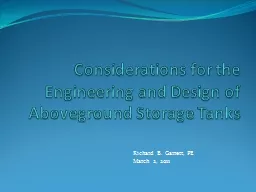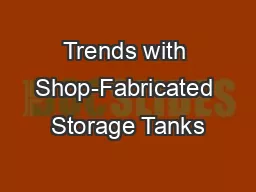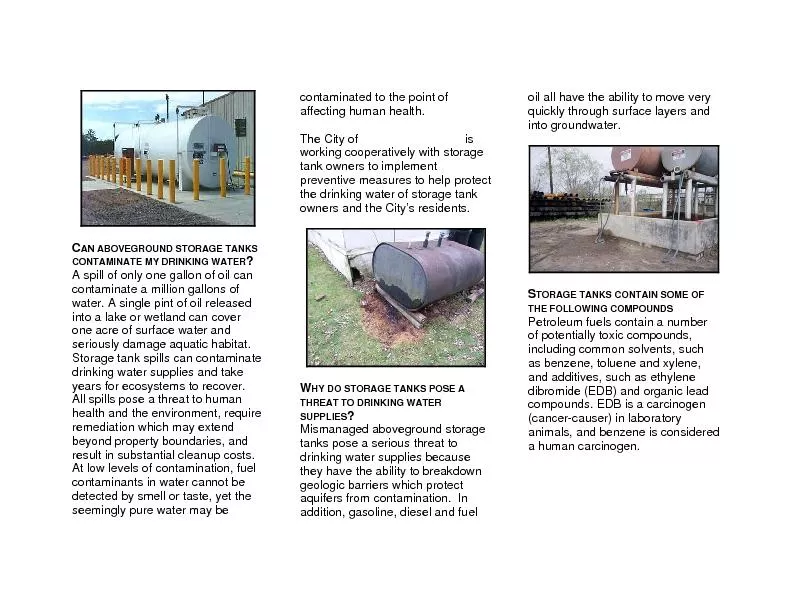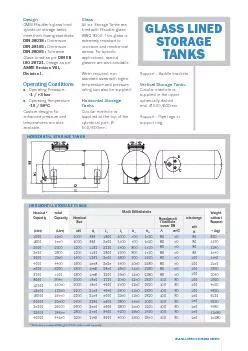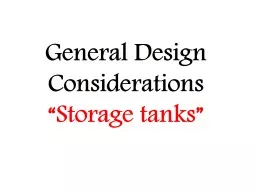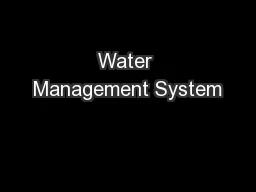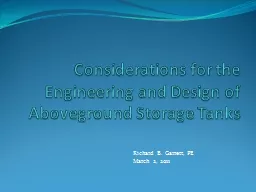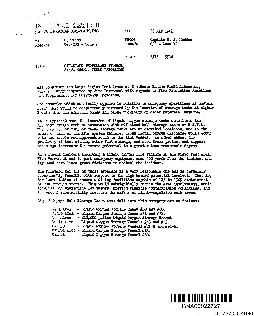PPT-Considerations for the Engineering and Design of Aboveground Storage Tanks
Author : sherrill-nordquist | Published Date : 2018-11-15
Richard B Garrett PE March 2 2011 Issues covered in this Presentation Considerations for determining size of tank desired Owners perspective of what information
Presentation Embed Code
Download Presentation
Download Presentation The PPT/PDF document "Considerations for the Engineering and D..." is the property of its rightful owner. Permission is granted to download and print the materials on this website for personal, non-commercial use only, and to display it on your personal computer provided you do not modify the materials and that you retain all copyright notices contained in the materials. By downloading content from our website, you accept the terms of this agreement.
Considerations for the Engineering and Design of Aboveground Storage Tanks: Transcript
Download Rules Of Document
"Considerations for the Engineering and Design of Aboveground Storage Tanks"The content belongs to its owner. You may download and print it for personal use, without modification, and keep all copyright notices. By downloading, you agree to these terms.
Related Documents

